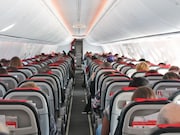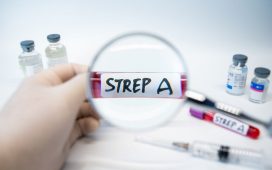Overall, 16.5 percent require additional care on landing; 0.5 percent lead to aircraft diversion
THURSDAY, July 25, 2019 (HealthDay News) — Most pediatric in-flight medical events (IFMEs) are handled by crewmembers, according to a study published online July 25 in the Annals of Emergency Medicine.
Alexandra T. Rotta, M.D., from the Duke University Medical Center in Durham, North Carolina, and colleagues characterized IFMEs involving children under 19 years of age treated in consultation with a ground-based medical support center from Jan. 1, 2015, to Oct. 31, 2016.
The researchers found that 15.5 percent of the 75,587 IFMEs involved children. Most (76.1 percent) occurred on long haul flights and 14 percent involved lap infants. In general, in-flight care was provided by crewmembers only, and by physician and nurse passenger volunteers (88.6, 8.7, and 2.1 percent, respectively). Overall, 82.9 percent of IFMEs were resolved in flight; 16.5 and 0.5 percent required additional care upon landing or led to aircraft diversion. Nausea or vomiting, fever or chills, and acute allergic reaction (33.9, 22.2, and 5.5 percent) were the most common diagnostic categories. There were positive correlations for the need for additional care after disembarkment with events involving lap infants, syncope, seizures, burns, dyspnea, blunt trauma, lacerations, or congenital heart disease; those requiring a volunteer medical provider; and those requiring supplemental oxygen.
“Our findings can be useful to the general flying public and prospective health care professional passenger volunteers, and may inform the discussion and policies concerned with the safety of pediatric flyers worldwide,” the authors write.
Several authors disclosed financial ties to pharmaceutical, medical travel, and publishing industries.
Copyright © 2019 HealthDay. All rights reserved.








